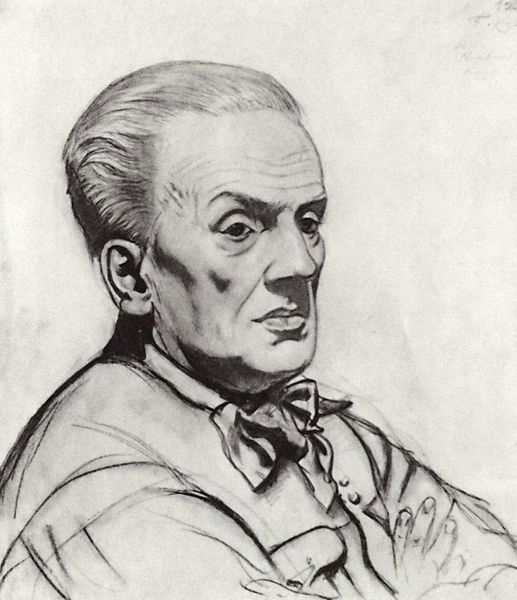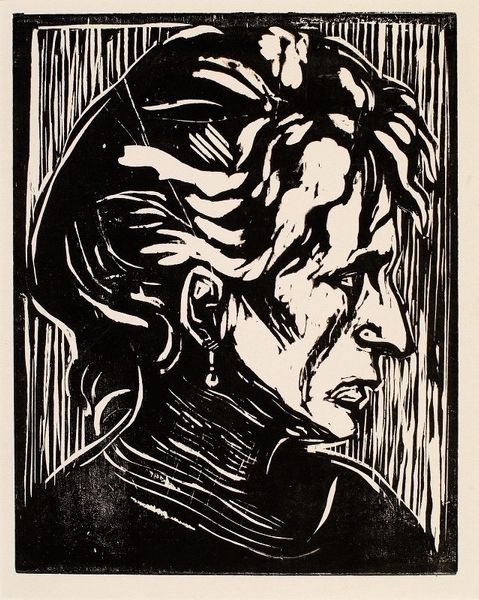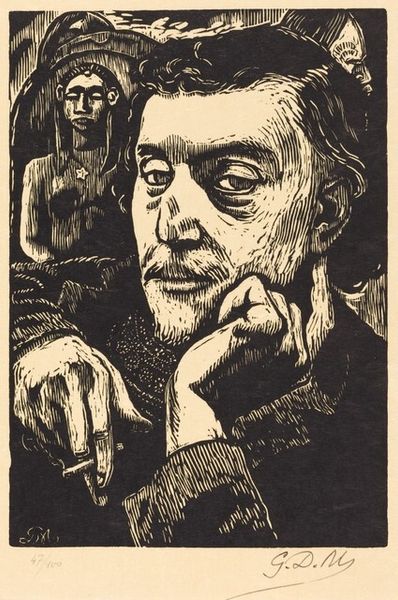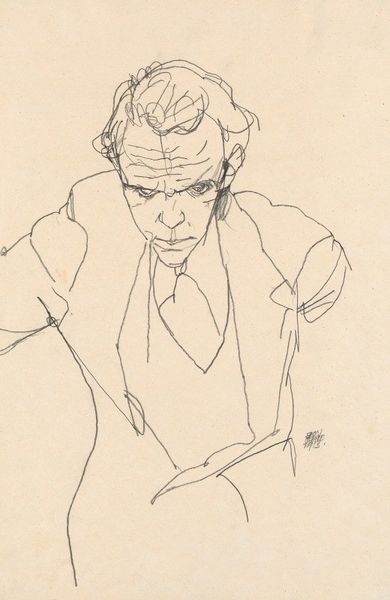
graphic-art, print, woodcut
#
portrait
#
graphic-art
# print
#
caricature
#
caricature
#
figuration
#
expressionism
#
woodcut
#
line
Copyright: Public domain
Curator: This striking woodcut, titled "Portrait of Yuri Korvin-Krukovsky," was created by Boris Kustodiev in 1926. The bold use of black and white immediately grabs the eye. Editor: It's unsettling, isn’t it? The sharp contrast, the almost grotesque exaggeration of the subject's features, combined with what looks like another figure looming behind… it suggests a feeling of anxiety or social critique, wouldn't you say? Curator: Indeed. Look at the meticulous craft in rendering this graphic artwork, specifically the medium: a woodcut print. Kustodiev's mark-making highlights the expressive possibilities inherent in the physical process itself, playing with positive and negative space with intention. Editor: Absolutely. Given the social and political climate of the time, the sharp lines and exaggerated features read almost like a visual protest. One wonders about Korvin-Krukovsky himself and the story of his representation here, right on the cusp of Stalinism. Was this art created as critique? Is this part of some radical and risky political agenda? The setting itself suggests theatre, almost stagecraft. Curator: Kustodiev seems aware of, or at least interested in playing with, printmaking conventions, manipulating line and texture as if deliberately highlighting its mass reproducibility as both form and content. Editor: That figure in the background...the stark stage, heavy shadows, and almost satirical approach create an intriguing atmosphere. There's a palpable tension created by these dark, high-contrast lines, prompting reflections on issues of social dynamics, power relations, and the precarious status of the individual during a period of upheaval. I read "XL" beneath the image - is it hinting at something I'm missing? Curator: Possibly. In a work of this type, the material qualities directly reinforce the message: a harsh rendering from unforgiving wood becomes something poignant. The image invites speculation. Editor: For me, this artwork serves as a reminder of the importance of scrutinizing societal and political forces and the complex ways those are expressed or oppressed under duress. Art such as this acts as a visual touchstone that generates critical reflection on our historical circumstances. Curator: Ultimately, through the use of line, contrast, and materiality, the portrait communicates beyond likeness alone. Editor: A provocative statement achieved through powerful design choices.
Comments
No comments
Be the first to comment and join the conversation on the ultimate creative platform.













